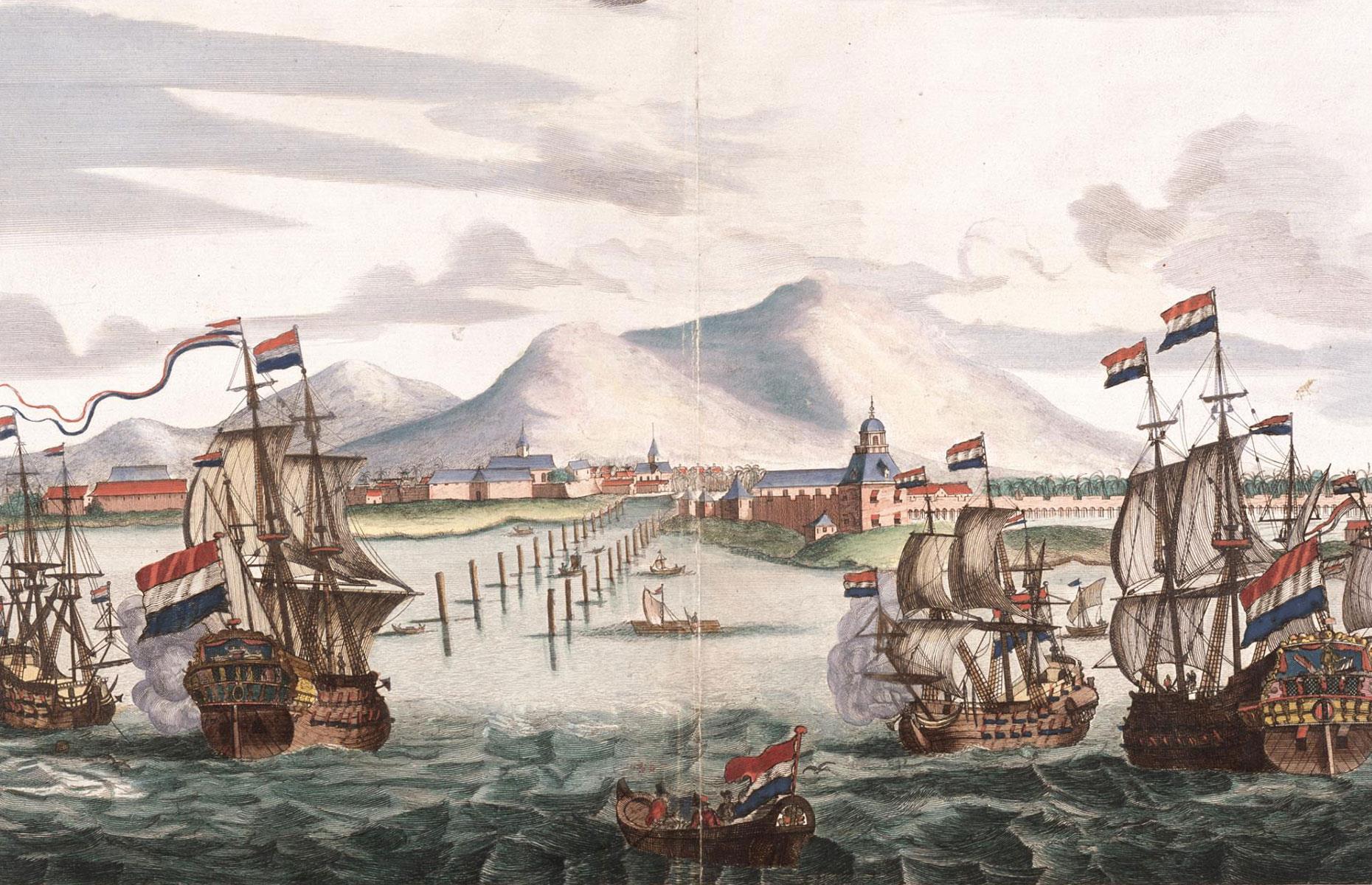
Establishment of the Dutch East India Company (1602)
In 1602, the Dutch government embarked on an ambitious mission to monopolize the global spice trade. This endeavor gave birth to the Dutch East India Company, an official colonial agency with substantial financial backing and the legal authority to wage war, establish overseas settlements, and enforce its own laws. For over two centuries, this company served as the primary representative of Dutch interests in Asia, dominating European trade and eclipsing its British and Portuguese competitors.
Portuguese Dominance and Dutch Response (16th Century)
During the 16th century, the Portuguese Empire held a tight grip on the European spice trade and utilized Lisbon as a central distribution point for the continent. Deliberately circumventing the Dutch Republic, Portuguese fleets disrupted trade between the Low Countries and the rest of Europe. In response, the Dutch commissioned their own fleet in 1595 to challenge Portuguese dominance. This inaugural expedition successfully returned from Indonesia with a substantial spice haul, leading to rapid fleet expansion over the next three years and the eventual formation of the Dutch East India Company.
Establishing a Global Presence
The Dutch East India Company achieved remarkable profitability and was granted permission by the Dutch government to establish forts across Southeast Asia and footholds throughout the continent. Following prolonged conflicts with the Portuguese navy, the company finally overtook its main competitor by capturing Jakarta in 1619, where it established its expansive headquarters, Batavia. This strategic outpost provided the company with a stronghold in the Pacific, enabling it to exert control over nearby trade routes, albeit at the cost of devastating Java, including the destruction of settlements and loss of lives.
Aggressive Economic Policies and Decline (18th Century)
Over the next five decades, the company pursued an aggressive economic policy aimed at undermining its rivals. It created an intra-Asia trade network that facilitated the purchase and sale of precious metals at significantly reduced rates. As the Portuguese influence gradually waned, British naval supremacy began to rise. The profits from colonial trade gradually declined over the next half-century as the spice market became oversaturated due to the establishment of new trade links with South America.
Conflicts and Demise
The Dutch found themselves in continuous conflicts with the British, engaging in two devastating wars that took a toll on both sides. The second conflict, occurring between 1780 and 1784, nearly spelled disaster for the company, with British forces decimating half of the Dutch fleet. These losses were never fully recovered, and by 1799, the Dutch East India Company was officially disbanded, marking the end of its two-century-long dominance in the spice trade.
To read on, see our Apartheid blog post here



